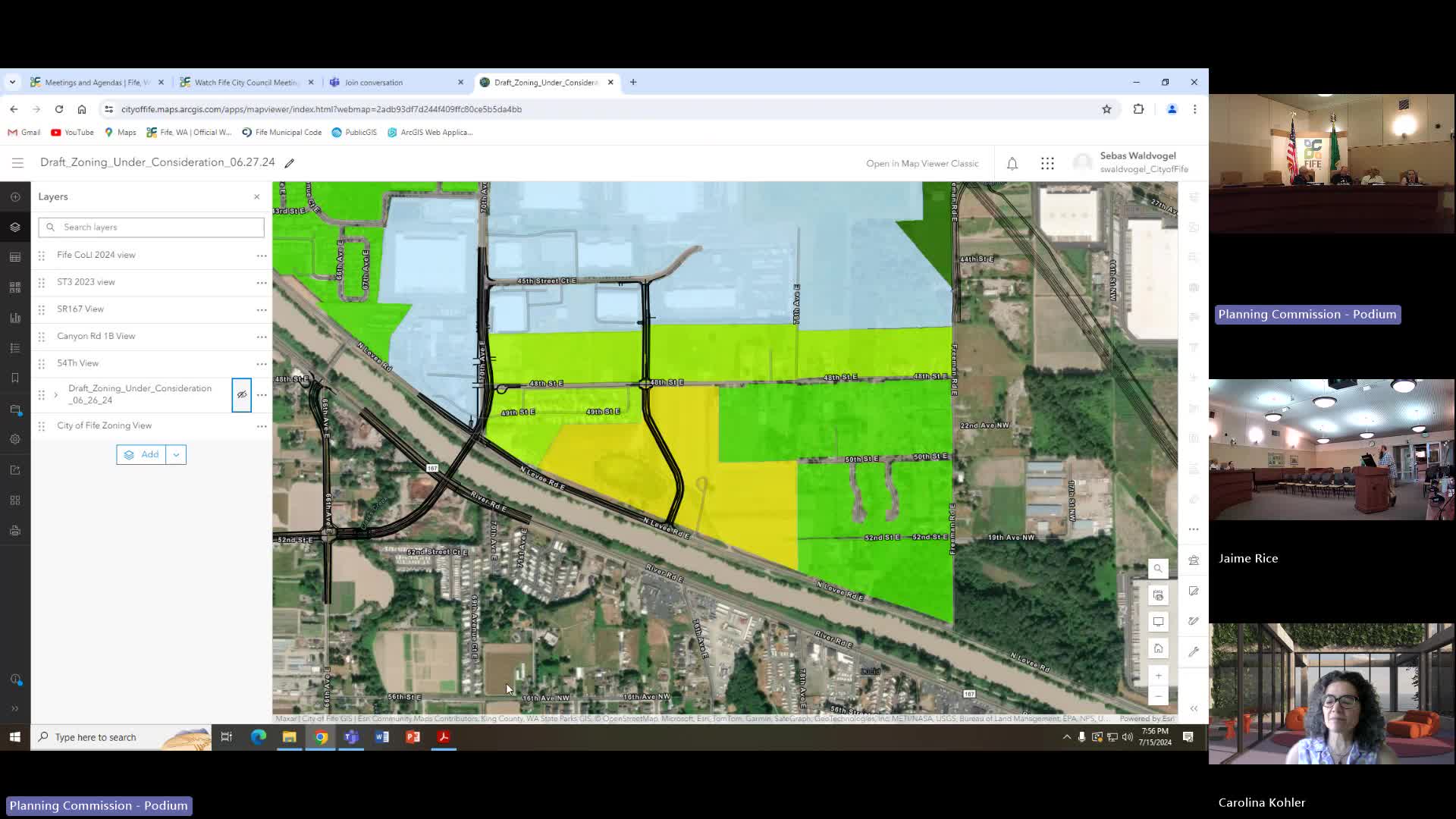Housing Zoning Overhaul Aims to Boost Affordability and Options
July 15, 2024 | Fife, Pierce County, Washington

This article was created by AI summarizing key points discussed. AI makes mistakes, so for full details and context, please refer to the video of the full meeting. Please report any errors so we can fix them. Report an error »

In a recent government meeting, officials discussed significant updates to zoning regulations aimed at enhancing housing options and addressing community needs. The conversation centered on the classification of various housing types, including low-income and assisted living facilities, which are primarily categorized under residential zoning.
Director Larson highlighted the potential for affordable housing development in the Firwood neighborhood, emphasizing that medium-density residential zoning could accommodate various housing types, such as townhomes and cottage housing. While the area is not currently considering a multifamily tax exemption, there remains an opportunity for nonprofit organizations to establish subsidized housing.
The meeting also addressed proposed amendments to zoning classifications, including the removal of certain prohibited uses that have caused confusion in implementation. Changes to the medium-density residential zone will now allow for a maximum of six multifamily units per structure without requiring a conditional use permit, a reduction from the previous allowance of up to twelve units. This adjustment responds to public feedback indicating that higher densities were perceived as excessive.
In addition to housing, the discussion included provisions for transitional and permanent supportive housing across various zones, aligning with state mandates. The community commercial zone will now permit emergency shelters and housing, reflecting a broader strategy to integrate these essential services within areas designated for commercial use.
The meeting also explored the introduction of accessory uses, such as employee daycare facilities, to address childcare shortages in the region. This initiative aims to enhance community support for working families by allowing businesses to provide on-site childcare.
Furthermore, the industrial zone will see updates that encourage craft manufacturing and retail opportunities, particularly as the area prepares for the arrival of a new Sound Transit station. This shift aims to foster economic development and create a vibrant community space.
Overall, the proposed amendments reflect a comprehensive approach to zoning that prioritizes housing diversity, community needs, and economic growth, while also responding to public input and state requirements. The meeting concluded with an invitation for further discussion on the proposed changes and their alignment with the city's policy direction.
Director Larson highlighted the potential for affordable housing development in the Firwood neighborhood, emphasizing that medium-density residential zoning could accommodate various housing types, such as townhomes and cottage housing. While the area is not currently considering a multifamily tax exemption, there remains an opportunity for nonprofit organizations to establish subsidized housing.
The meeting also addressed proposed amendments to zoning classifications, including the removal of certain prohibited uses that have caused confusion in implementation. Changes to the medium-density residential zone will now allow for a maximum of six multifamily units per structure without requiring a conditional use permit, a reduction from the previous allowance of up to twelve units. This adjustment responds to public feedback indicating that higher densities were perceived as excessive.
In addition to housing, the discussion included provisions for transitional and permanent supportive housing across various zones, aligning with state mandates. The community commercial zone will now permit emergency shelters and housing, reflecting a broader strategy to integrate these essential services within areas designated for commercial use.
The meeting also explored the introduction of accessory uses, such as employee daycare facilities, to address childcare shortages in the region. This initiative aims to enhance community support for working families by allowing businesses to provide on-site childcare.
Furthermore, the industrial zone will see updates that encourage craft manufacturing and retail opportunities, particularly as the area prepares for the arrival of a new Sound Transit station. This shift aims to foster economic development and create a vibrant community space.
Overall, the proposed amendments reflect a comprehensive approach to zoning that prioritizes housing diversity, community needs, and economic growth, while also responding to public input and state requirements. The meeting concluded with an invitation for further discussion on the proposed changes and their alignment with the city's policy direction.
View full meeting
This article is based on a recent meeting—watch the full video and explore the complete transcript for deeper insights into the discussion.
View full meeting
